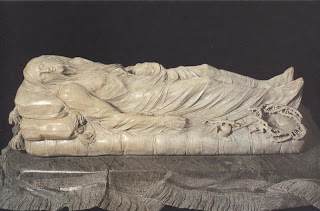Don Gawlik, an avid explorer of the Campania region, returns for this guest post! He found this Convento in a small village of Campagna and writes of its secrets here. Thank you, Don!
The Sunday Skip: Not far from Salerno, deep in the heart of Campania, is a town that was holding a secret for sixty years. Its position high at the mouth of a mountain canyon was the reason for the location of this mystery. Located past its medieval center, up a walking path too steep for motorized vehicles, was an abandoned convent that became a perfect choice. Residences to the left of the stone path are one house deep, backing to a cliff. The mountainside on the right is steep terrain. The ruggedness of the area made the site an advantage.
Elizabetta Bettina, author of It Happened in Italy, is a native New Yorker, but spent many summers of her teenage years with her grandmother in this village named Campagna. She had heard references to a few Jews hidden in the surrounding mountains, but it wasn’t until six years ago that she began to piece together the part this town played in the story of Jews interned in Italy during WWII. The story had not intentionally been kept a secret - for the people of Campagna, it was something they did, and then life just moved on.
During WWII, the old Convento di San Bartolomeo was overseen by Bishop Giuseppe Maria Palatucci. His nephew, Giovanni Palatucci, born in Montella, in Avellino provence, was working in northern Italy as an Italian police officer for the Mussolini government. His job was to process foreign residents in Italy.
Italy was the only government that kept its borders open to Jews until the war began. Many Italians, following their collective conscience, did not do what they were told to do, but did what they thought was right. Giovanni Palatucci, taking advantage of his position in the government, worked to enable people to leave Italy with false documents, or, if he couldn’t, arranged to send them to his uncle in Campagna. It has now been said by surviving Jews that the Bishop’s Convento di San Bartolomeo symbolized goodness during the Holocaust.
Jews were interned in Italy. Next to Denmark, Italy had the highest survival rate of any Nazi-occupied country. Yet, unlike other countries in Europe, “The Italians treated them [Jews] like human beings,” said Auschwitz survivor Edith Moskovich Birns, from It Happened in Italy. Thousands survived because of the generosity of these Italians.
For many, it was internment, Italian style.
Campo di San Bartolomeo was like other camps in Italy - they were not work camps, nor death camps. They were more like detainment camps for displaced persons, where Jews, and other internees, were generally treated with dignity and respect. They were known to have schools, synagogues, rabbis, weddings. Time might have been spent playing playing cards, or reading. Campagna’s internees were allowed to organize a library, school, theater, synagogue, and their own newsletter. A team played local soccer. Families separated in camps were frequently reunited. In some areas where camps did not exist, apartments were provided and Italian rations granted.
Campo di San Bartolomeo was an internato libero (internment that was free). Because of the convent’s confined space, internees were allowed to leave, but had to stay in town, signing in at the police office daily. Carabinieri permission was needed if one wanted to leave for the day.
After September 8, 1943, everything thing changed for the Jews in camp. Italy stopped fighting on the side of the Germans and joined the Allies. The Germans remained in Italy and began to hunt for the Jews that the Italians would not deport.
Entering Campagna that September, officers intended to move the Jews to extermination camps in Poland and Germany. They informed those in charge that they intended to come the next day for the Jews. The internees exited a window that night and fled into the local mountains. Only to the Germans had they disappeared, though. The Italians continued to care for those in hiding. Thousands all over Italy were sheltering and helping Jews after September 8.
The Campo di San Bartolomeo remained in operation until September of 1944. After the war, former internees contributed to restoration of the convent. The Itinerario della Memoria e della Pace (Route of Memory and Peace), in honor of the goodness of Giovanni Palatucci, was recently dedicated at the restored convent. “There was no difference between us and the Italians,” said survivor Walter Wolff in It Happened in Italy.
After being arrested in September of 1944, the Germans sent Giovanni Palatucci to Dachau where he died on February 10, two months before liberation. He has been called the Italian Shindler.
Before you visit, call Carmine Granito at 339.280.9483. He will open the museum for you. He loves to help visitors and groups understand the museum, but a knowledge of Italian will help, as he speaks little English. Most information in the museum is in English, however. There is no entrance fee.
Getting There: Follow autostrada A3 east, and about 35 km. past Salerno take the Campagna exit. Then, follow local signs to the town. After entering town, follow signs to the parking area. Walk back to the main piazza, and across the street from the war memorial is the first sign for the itinerario. You will follow the main street uphill, stopping at other informational signs long the way. The route will conclude at the Chiesa di San Bartolomeo, where the visitor will find the final sign at the entrance to the convent and museum.

















































